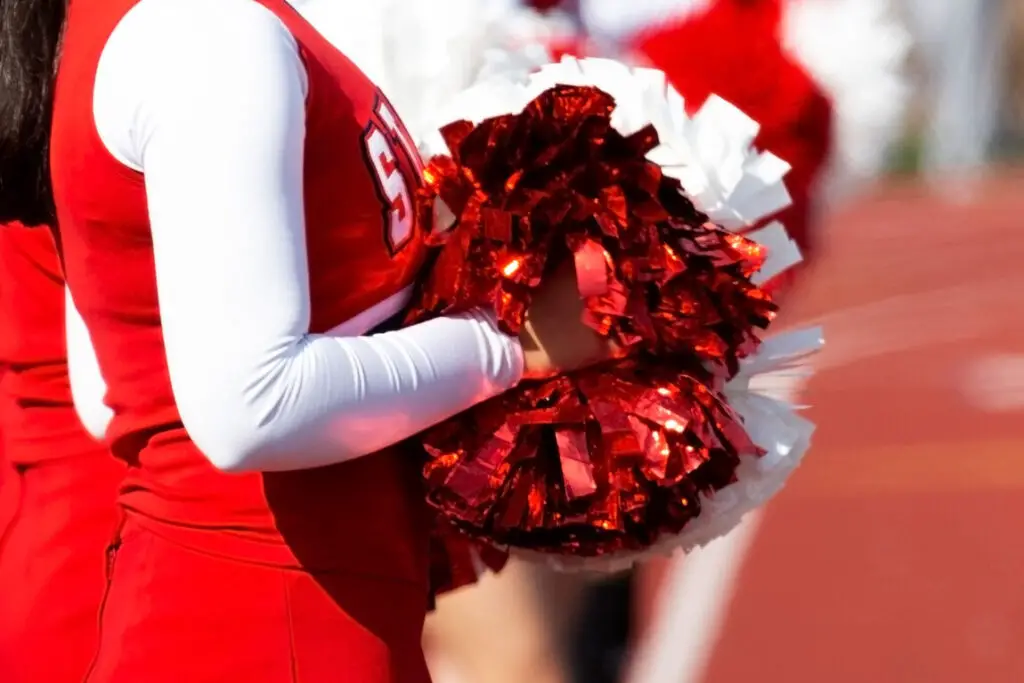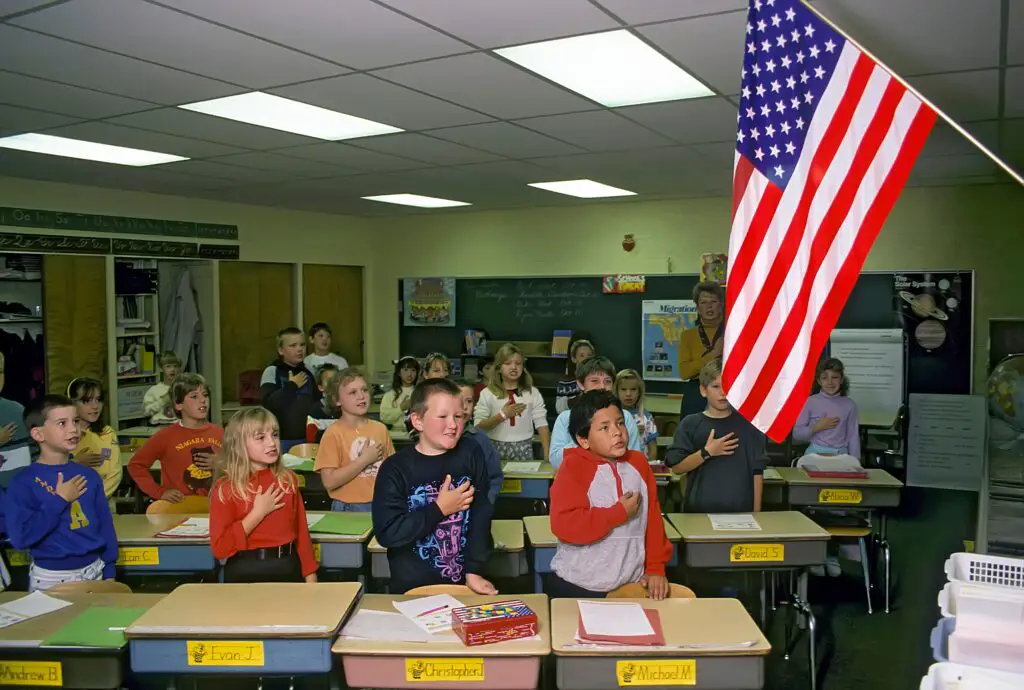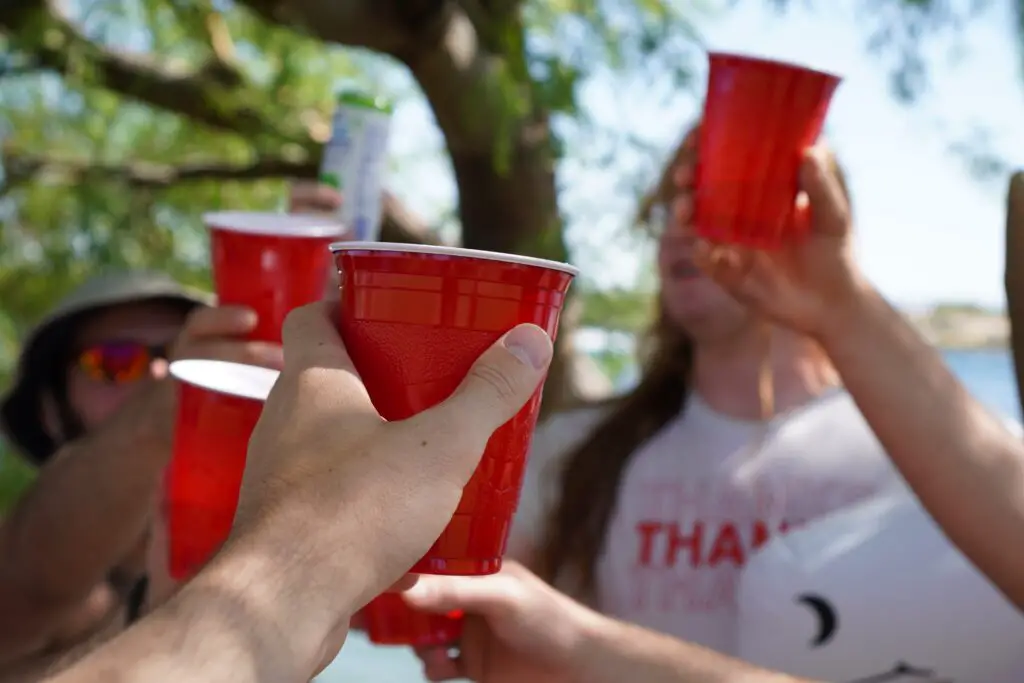1. Tipping Culture

If you’ve ever traveled outside the U.S., you probably noticed something pretty quickly: tipping isn’t nearly as intense elsewhere. In America, leaving 15-20% at restaurants is not just expected—it’s practically mandatory. But in many other countries, servers are paid a livable wage, and tipping is either minimal or even considered rude. So when tourists come here and get confused by all the percentages and tipping calculators, it’s not hard to see why. We’ve turned gratitude into a math problem, and it’s stressful for everyone involved shares the Guardian.
And it’s not just restaurants—tipping happens at salons, coffee shops, food trucks, and even some self-checkout kiosks now. Other countries often find this baffling, wondering why the burden of paying workers falls on the customer. It’s a uniquely American phenomenon tied to wage laws and service culture, but it doesn’t make much sense from the outside. Honestly, sometimes it doesn’t make sense from the inside either adds the Telegraph.
2. Keeping the Drinking Age at 21

In most of the world, 18 is the standard age for legally drinking alcohol. But in the U.S., despite being able to vote, go to war, and get married at 18, you can’t order a beer until you’re 21. It’s one of those rules that sounds like it came from a very concerned PTA meeting in the 1980s—and in some ways, it did. Other countries are often surprised by how strict America is when it comes to alcohol laws says Britannica.
And let’s be honest, it doesn’t really stop underage drinking—it just makes it sneakier. College parties, fake IDs, and secret flasks are practically rites of passage here. Other countries often take a more relaxed, integrated approach to drinking and see fewer problems because of it. Americans sometimes joke about it, but deep down, most agree the law feels a little outdated adds Food & Wine.
3. Endless TV Commercial Breaks

If you’ve ever watched American TV with someone from another country, you probably had to apologize for how often the show stops for ads. Commercials pop up every few minutes, and just when things get good—bam! A five-minute break for laundry detergent and fast food. It’s jarring, and frankly, it ruins the flow of storytelling. Many countries have stricter regulations or fewer ad interruptions altogether.
Streaming services have helped ease the pain, but traditional TV still clings to this model. To outsiders, it feels like watching a show through a slot machine. One second you’re in a courtroom drama, the next you’re watching a car fly through the desert. It’s a wonder anyone can follow a plot.
4. Measuring Everything in Inches and Pounds

Ask an American how many kilometers are in a mile or how many ounces in a liter, and you’ll probably get a blank stare. The U.S. is one of the only countries that still clings to the imperial system, while most of the world uses metric. It leads to all kinds of confusion when trying to share recipes, calculate temperatures, or even understand clothing sizes. Foreigners often ask, “Why make it so complicated?”
And truthfully, we don’t always have a great answer. We’ve just kind of… always done it this way. Even though metric is easier and more logical, switching would mean changing road signs, textbooks, and a whole lot of habits. So we carry on with our quirky units and quietly envy the rest of the world’s simplicity.
5. School Starting So Early

Waking up at 6 a.m. to catch the school bus is something almost every American kid remembers. But in many other countries, school starts closer to 8:30 or even 9, giving students time to sleep and start their day at a reasonable pace. Sleep experts have been saying for years that teens need more rest, yet most American schools still open their doors at the crack of dawn. Outsiders often find this baffling.
The logic behind early start times has to do with bus schedules and after-school activities, but it’s hard to justify when kids are nodding off in first period. Other nations prioritize rest and alertness, and their students perform just as well—if not better. Maybe it’s time we all hit the snooze button and rethink the system.
6. Wearing Shoes Indoors

This one might not seem like a big deal to Americans, but in many cultures, wearing shoes inside the house is a major no-no. It’s seen as dirty, disrespectful, or just plain odd. But in the U.S., it’s not uncommon to stroll through the living room in sneakers or boots. Even TV characters rarely take their shoes off at the door.
To outsiders, it’s a mystery—why track street grime into your home? Some Americans are starting to adopt the no-shoes-inside rule, especially with the rise of hardwood floors and area rugs. But overall, it’s still a cultural habit that many around the world just can’t wrap their heads around.
7. Cheerleading as a Sport

In America, cheerleading is a big deal. It’s a full-blown sport with competitions, scholarships, and TV specials. But in most other countries, it’s not even on the radar. The idea of chanting and doing flips on the sidelines of a football game feels more like a movie plot than real life.
But for American teens, it’s a serious commitment, often starting as early as middle school. There’s athleticism, teamwork, and an entire culture around it. Still, many outsiders see it as a quirky and very specific part of U.S. high school life that doesn’t translate anywhere else. It’s as American as apple pie—and just as confusing to explain.
8. Obsession with Ice in Drinks

Order a soda in America and it’ll come with a mountain of ice, often more than actual liquid. But in many other places, drinks come chilled but not overflowing with frozen cubes. Europeans especially find the ice obsession odd and sometimes even unappealing. They prefer to taste their drinks without watering them down.
In the U.S., though, a drink without ice can feel like something’s missing. Restaurants go through bags of the stuff daily, and people even buy countertop ice machines for home use. It’s a tiny detail, but one that really stands out to visitors. Ice, apparently, is just another part of American hospitality.
9. College Sports Being a National Spectacle

In most countries, if you’re watching a high-stakes sports game, it’s probably a professional league. But in the U.S., college football and basketball dominate headlines, TV ratings, and massive stadium crowds. To outsiders, it’s hard to understand how unpaid students can be at the center of such a huge industry. And yet, college sports in America are treated with the same reverence as the pros.
There are mascots, fight songs, and entire towns built around game day culture. It’s exhilarating, but also a little perplexing when you think about it. Other countries wonder why so much money and attention go toward university teams instead of academics. But in the U.S., it’s tradition—and for many, it’s the best part of the college experience.
10. Drive-Thru Everything

Drive-thru burgers? Totally normal. Drive-thru pharmacies? A little unusual, but okay. But drive-thru weddings, liquor stores, and even funeral homes? Now we’ve entered peak American convenience. To the rest of the world, it sounds like something from a sitcom.
We love our cars and we love speed, so why not combine them at every opportunity? It’s efficient, sure, but sometimes it feels like we’re in such a rush, we forget to just stop and walk inside. Visitors often find it baffling—and a little dystopian. But to Americans, it’s just another way to keep moving.
11. The Pledge of Allegiance in Schools

Most Americans grew up reciting the Pledge of Allegiance every morning, hand over heart, eyes on the flag. But if you mention this tradition to someone from another country, expect some wide-eyed reactions. The idea of children pledging loyalty to their nation before math class feels a bit intense to outsiders. It’s not a common practice in many places.
Some see it as a sign of patriotism, others find it unsettling or overly nationalistic. Either way, it’s deeply embedded in American school culture. Even students who don’t participate are often expected to stand quietly. It’s just one of those things that makes the American classroom experience totally unique.
12. Celebrating Prom Like It’s a Hollywood Premiere

Prom in America is a full-blown production—limos, gowns, tuxedos, and sometimes even red carpets. For many students, it’s one of the biggest events of their teen years. But in most other countries, school dances are more low-key affairs (if they happen at all). Outsiders are often shocked at how expensive and elaborate it all is.
Promposals, dress fittings, and after-parties turn it into a months-long event. Some parents even shell out thousands for the night. While it makes for great memories and cute photos, the whole thing can feel over-the-top to those looking in from the outside. Still, for many Americans, it’s a rite of passage that’s hard to imagine skipping.
13. Using Red Solo Cups at Parties

The red Solo cup is practically a cultural icon in America. From college keggers to backyard barbecues, these plastic cups are everywhere. But outside the U.S., they’re rarely seen—and thanks to movies and TV shows, they’re almost a symbol of “American partying” abroad. Tourists sometimes even seek them out as novelty items.
There’s something oddly specific and nostalgic about them for Americans. They’re cheap, durable, and oddly satisfying to hold. But if you show up to a party in, say, Germany or Japan with a sleeve of Solo cups, you’ll probably get some confused looks. They’re just another detail that makes American get-togethers feel very, well, American.
14. Presidential Pardoning of a Turkey

Every year around Thanksgiving, the President of the United States pardons a live turkey on national TV. It’s meant to be funny and symbolic, but to most of the world, it’s just bizarre. Why are we sparing one bird while eating millions of others? It’s the kind of thing that sounds made up until you actually see it happen.
Even Americans joke about how strange it is, but the tradition continues anyway. The turkey even gets a name and a cushy retirement at a farm or historical site. Other countries may have odd traditions, but this one consistently makes top “wait, what?” lists. It’s peak American pageantry.
15. Turning Everything into a National Day

In the U.S., there’s a “National Day” for pretty much everything—donuts, pets, pizza, even hugging. It seems like every day is a new excuse to celebrate something trivial. While it’s fun and social media-friendly, people from other countries are often bewildered by just how many of these days exist. There’s even a website that tracks them all.
It’s lighthearted, sure, but sometimes it feels a bit excessive. Not everything needs a day, right? But Americans love a theme and any reason to post a selfie or grab a free coffee. It’s quirky, random, and totally in line with our love of novelty.
